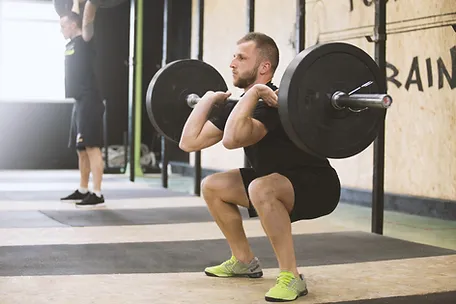The Lower Hudson Valley Region is re-opening SLOWLY, but steadily. While many businesses have adapted by offering online services, we have remained open and are so happy to see more people being confident in themselves and us and are coming out and into the office—which just shows that re-opening of the state is going well. Most people I speak to are so excited to get back to “normal”, including getting back to their work outs, sports and activities they love.

But, Will Your Body Be Ready?
If you’ve stayed with your strength and mobility training and have been working out regularly through all this, then you have a better chance than most to get right back into it.
Many people I speak to have felt deserted during this time and have not kept their strength training up, instead have resorted to walking, running, or bike riding as the substitute for their normal workout.
While any physical activity is better than no physical activity, daily cardio training is not the same as strength training. Just the same as strength training is not the same as cardio. Neither of these on their own prepares you when the gyms open up to jump right back into your normal training routine.
Muscle loss that occurs in 2-3 weeks can take 2-3 months to regain…we are now in quarantine 10+ weeks.
The biggest mistake most people make when heading back to the gym after an extended absence (and it doesn’t just have to happen because of a global pandemic—it happens to many of us as regular life gets hectic) is that everyone wants to start where they left off—thinking that their body will just “remember” what they were doing and forgetting that 10 weeks off is a long time! And that is where INJURIES pop up…usually within 2-3 weeks.
What Can You Do About It?
If you’re one of the people who have been walking, running or biking, then it’s a good time to add some strengthening and mobility training into your work out. Start with some squats, push-ups, and heel raises before your cardio training. Even starting to begin strengthening will allow your body to transition back into the gym, and allow you to experience less pain and soreness with your return.
If you’re one of those people who have spent a little too much time on your couch and tried to challenge yourself to watch EVERYTHING on Netflix, it’s not too late to start. We are still a few weeks from the Gyms re-opening, so start with a 20-minute walk and work your way up to a more intense cardio work out, but DON’T forget the strengthening.
If you don’t know where to start or are worried that you won’t do well with the transition back to the gym, we offer our yearly PT check-up.
Take a look at this Blog post to understand what our PT check-up is and how it can help you!
We can guide you through the movements and exercises that you should key in on to to get you back on track. We can make sure your form is correct and can personalize the program to your needs and using only the equipment (or lack of equipment) that you have to get you moving. This allows us to give you all the information and movement corrections that you will need to succeed and be ready for when the gym opens back up.
I get this all the time (even when people haven’t been forced to stay out of gyms). Perhaps they have been running or walking more than they are used to or lifting more than they are used to and their form fails.
Then it’s time to talk to a movement specialist (Like us) before you jump back onto your regular exercise routine. We screen muscles and joints so we can guide you back into your workouts, as well as help you get rid of the pain so you can crush your workouts once the gyms are able to open again.
Some people think that pain will go away once they settle into an exercise routine. While OCCASIONALLY this may be true for the select few people, most of the time it goes the other way and your pain either gets worse or you develop new pains because you are compensating for the original pain.
Pain from a workout may be a very quick fix if caught early enough by changing the exercise form, stretching certain muscles, or even adding a different exercise to prepare for the painful one. A movement specialist, such as a physical therapist can make these simple changes, often within one session.
…But if you ignore that pain, the fix can become more complicated.
SO don’t wait to find help.
If you have any questions about pain that you might be experiencing while getting ready to get back to the gym, or if you are interested in our Annual Performance Check Up, Give Us a Call!

